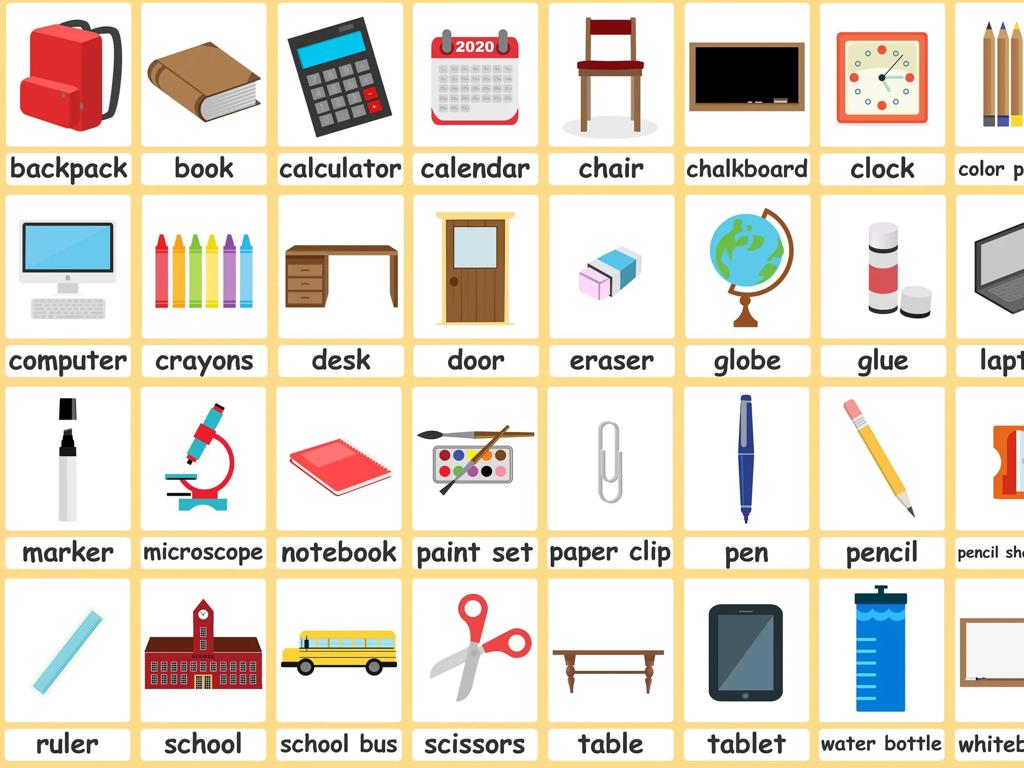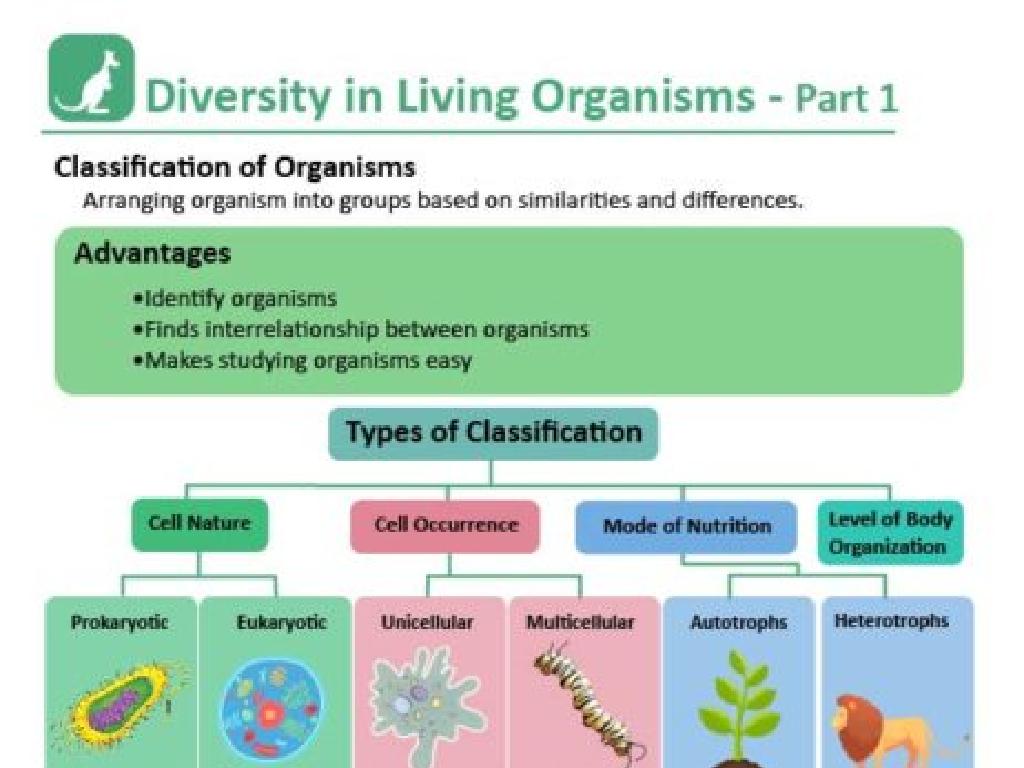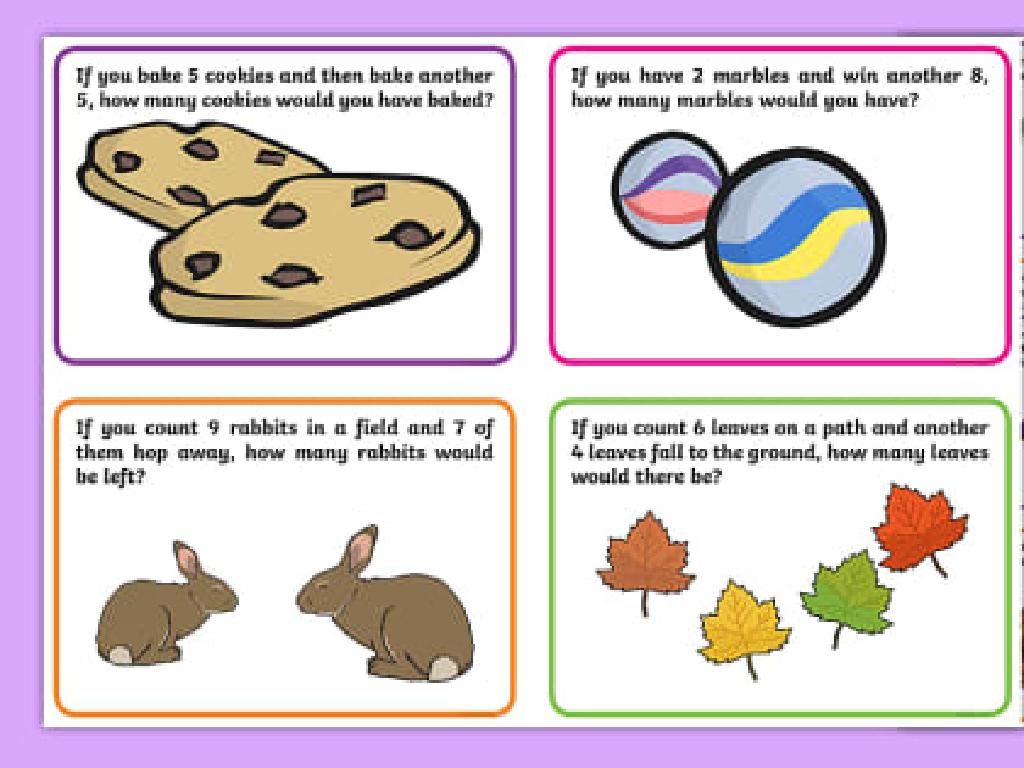Scientific Notation On Calculators
Subject: Math
Grade: Eighth grade
Topic: Scientific Notation
Please LOG IN to download the presentation. Access is available to registered users only.
View More Content
Welcome to Scientific Notation!
– Grasping the Power of 10
– Power of 10 simplifies expressing large numbers.
– Utility of Scientific Notation
– Simplifies calculations with very large or small numbers.
– Scientific Notation in Real Life
– Used in astronomy, chemistry, and engineering.
– Calculators & Scientific Notation
– Learn to input and interpret scientific notation on calculators.
|
This slide introduces students to the concept of scientific notation and its significance in various fields. Start by explaining the Power of 10 and how it helps in writing very large or small numbers compactly. Discuss why scientific notation is a useful tool in mathematics, particularly when dealing with extremely large or tiny quantities. Provide examples from astronomy (distances between celestial bodies), chemistry (Avogadro’s number), and engineering (tolerances in design specifications) to illustrate real-world applications. Finally, guide students on how to use their calculators to input and interpret numbers in scientific notation, which is a critical skill for their mathematical toolkit.
Understanding Scientific Notation
– Define scientific notation
– A method to express very large or small numbers
– Identify components: coefficient, exponent
– Coefficient: number between 1 and 10, Exponent: power of 10
– View examples of scientific notation
– E.g., 2.45 x 10^3 (large number), 5.67 x 10^-4 (small number)
– Practice with calculator input
– Learn to enter and interpret scientific notation on calculators
|
Scientific notation is a concise way to represent numbers that are extremely large or small, which is common in scientific and mathematical contexts. It consists of two parts: a coefficient, which is a number between 1 and 10, and an exponent, which indicates the power of 10 by which the coefficient is multiplied. Provide students with examples of numbers written in scientific notation, and demonstrate how to input these numbers into a calculator. Emphasize the importance of understanding both the manual input and the calculator’s display of scientific notation. Encourage students to practice entering different numbers to become familiar with the process.
Converting to Scientific Notation
– Rules for large numbers
– Move decimal left, count steps as exponent
– Rules for small numbers
– Move decimal right, negative exponent count
– Practice with 4500
– 4500 becomes 4.5 x 10^3
– Practice with 0.0036
– 0.0036 becomes 3.6 x 10^-3
|
This slide introduces students to the process of converting standard numbers into scientific notation, a form that simplifies working with very large or very small numbers. For large numbers, the decimal point is moved to the left until one non-zero digit remains on its left, and the number of moves becomes the positive exponent of 10. For small numbers, the decimal moves to the right, with the number of moves giving a negative exponent. Students will apply these rules to convert 4500 and 0.0036 into scientific notation. Encourage students to use their calculators to check their manual conversions and reinforce the concept. Provide additional examples if time permits to ensure understanding.
Using Calculators for Scientific Notation
– Locate Sci-Notation functions
– Find and use the ‘EXP’ or ‘EE’ button
– Enter numbers in Sci-Notation
– Input a number like 4.5E3 for 4.5 x 10^3
– Convert results to Sci-Notation
– Use the ‘Mode’ button to switch to Sci-Notation display
– Practice with example problems
– Try converting 4500 and 0.0036 to Sci-Notation
|
This slide aims to familiarize students with the use of scientific notation on calculators. Start by identifying the specific buttons used for entering scientific notation, commonly labeled as ‘EXP’ or ‘EE’. Demonstrate how to enter numbers in scientific notation format, emphasizing the use of the ‘E’ to represent ‘x 10^’. Show students how to convert the calculator’s results back into scientific notation if it doesn’t automatically display in that format, which usually involves changing the mode of the calculator. Finally, provide practice problems for students to apply these skills, such as converting standard numbers into scientific notation using their calculators. This will help reinforce their understanding and proficiency with the calculator functions.
Calculating with Scientific Notation
– Multiply numbers in scientific notation
– Multiply the coefficients and add the exponents. Example: (2 x 10^3) * (3 x 10^2) = 6 x 10^5
– Divide numbers in scientific notation
– Divide the coefficients and subtract the exponents. Example: (5 x 10^6) / (2 x 10^2) = 2.5 x 10^4
– Add and subtract with common exponents
– Ensure exponents match, then add/subtract the coefficients. Example: (4 x 10^3) + (3 x 10^3) = 7 x 10^3
– Practice with calculator exercises
|
This slide introduces students to the operations of multiplication, division, addition, and subtraction when working with numbers in scientific notation on a calculator. Emphasize the rules for each operation: for multiplication, combine the coefficients and add the exponents; for division, divide the coefficients and subtract the exponents. When adding or subtracting, make sure the exponents are the same before combining the coefficients. Provide calculator exercises for hands-on practice to solidify these concepts. Encourage students to work through examples and to check their understanding by comparing results with peers.
Calculator Practice: Scientific Notation
– Multiply 3.2 x 10^4 and 1.5 x 10^3
– Result: 4.8 x 10^7 (Scientific) or 48,000,000 (Standard)
– Divide 6.4 x 10^-2 by 8 x 10^-4
– Result: 8 x 10^1 (Scientific) or 80 (Standard)
– Convert answers to Scientific Form
– Convert answers to Standard Form
|
This slide presents practice problems to help students apply their knowledge of scientific notation using calculators. The first problem involves multiplication of two numbers in scientific notation, and the second problem involves division. After solving, students should write their answers in both scientific and standard form to reinforce their understanding of the notation. Encourage students to use the calculator’s exponent key for efficiency. Remind them to adjust the exponent when multiplying or dividing powers of ten. This exercise will solidify their ability to work with scientific notation and understand its practicality in representing very large or very small numbers.
Class Activity: Scientific Notation Scavenger Hunt
– Find objects with large/small quantities
– Work in pairs for notation conversion
– Use calculators for scientific notation
– Convert the object’s quantity to scientific notation format
– Present findings to the class
|
This activity is designed to help students apply their knowledge of scientific notation in a practical and engaging way. Students will search for items around the classroom or school that have large or small quantities suitable for scientific notation, such as the number of tiles on the floor or the distance to the nearest star in miles. Working in pairs, they will use their calculators to convert these numbers into scientific notation. This collaborative effort encourages peer learning and reinforces the concept of scientific notation. After the conversion, each pair will present their findings to the class, explaining the process they used. This presentation will help students practice their communication skills and solidify their understanding of scientific notation. As a teacher, be prepared to offer guidance on using calculators for this purpose and have a list of suggested objects or quantities in case students have difficulty finding suitable examples.
Conclusion: Scientific Notation Mastery
– Recap of scientific notation
A quick review of expressing large/small numbers efficiently.
– Significance in diverse fields
Used in science, engineering, and more for clarity and precision.
– Interactive Q&A session
– Encourage further exploration
Explore more applications and practice using calculators.
|
As we wrap up, let’s review the key concepts of scientific notation, emphasizing its compact form of representing very large or very small numbers. Highlight the importance of scientific notation in various fields such as science, engineering, economics, and technology, where it aids in simplifying calculations and improving accuracy. Open the floor for a Q&A session to address any lingering questions and encourage students to engage with the material. Finally, motivate students to continue practicing with their calculators and to explore additional applications of scientific notation in real-world scenarios. This will not only solidify their understanding but also showcase the practicality of what they’ve learned.





